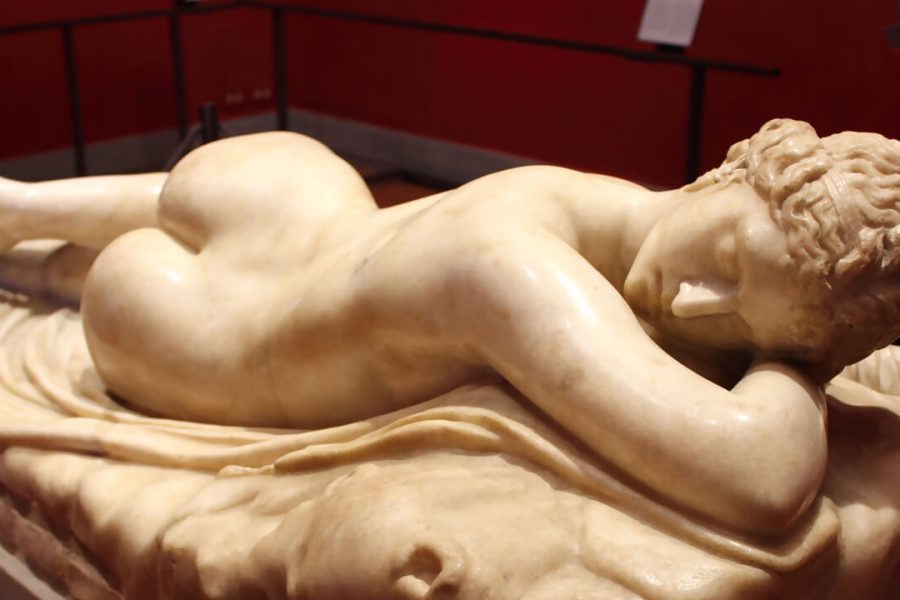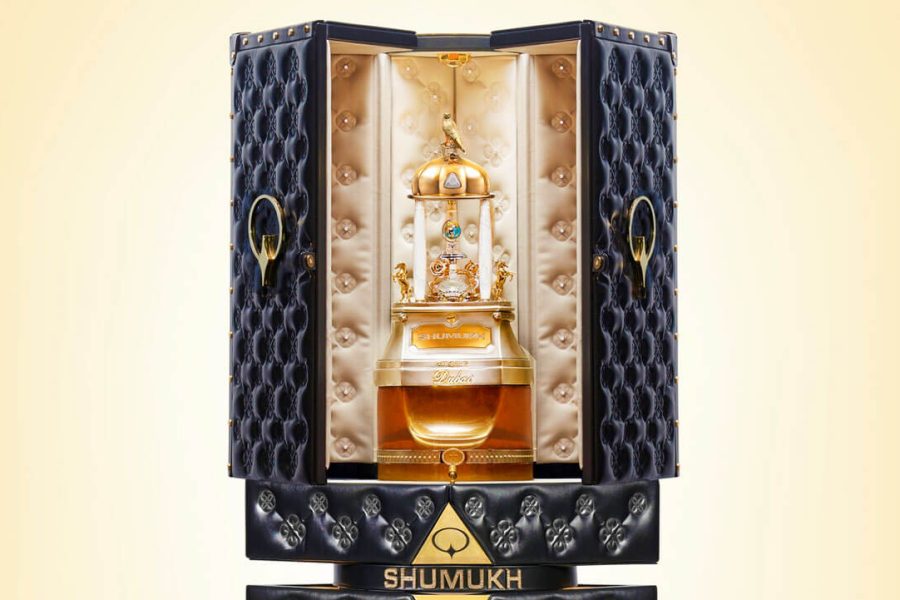Ireland has a rich tradition of weird and wonderful creatures, but it's not all fairies and leprechauns. Some of the denizens of the Irish underworld are downright terrifying. Like these 10!
10. Abhartakh
Long before Irish writer Bram Stoker invented Dracula, in Ireland there was a bloodsucker named Abhartach. One day, an evil wizard king from the hills around Glenullin, dwarf Abhartakh , was killed by his subjects and buried standing. When he returned the next day, demanding blood from their veins, his terrified subjects killed him again. But it was of no avail. Abhartakh kept coming back.
In desperation, they sought out a hermit in the forest and asked him what to do. "Abhartakh is not really alive," he explained, "he is one of neimh-mhairbh ["undead"]. In other words, he could not be killed. But he could be "hung" if he was killed with a sword made of yew wood and buried upside down in the ground, covered with ash branches and thorns, under a very large stone. Abhartach would remain there as long as the stone was there, the hermit said.
The stone still stands there today, with a tree growing from the thorns. Even now, it is considered “bad land.” Horribly, the most recent attempt to clear it, in 1997, was thwarted by a faulty chainsaw and blood loss when the chain lifting the stone snapped and cut one of the workers.
9. Banshee
Perhaps the most famous ghoul of the Emerald Isle is the banshee, which in Irish means ( bean sí ) means "woman from the other world." Her screams and cries, heard at night, foretell death in the family, but only if your family is Irish . Irish poet W. B. Yeats described the banshee as "a fairy's helper who follows old families and only them." More than one is considered an honor.
Queen banshee , Cliodhna, was a goddess of love and beauty, accompanied by birds that healed illnesses. But she also lured sailors to their deaths. For this she was punished by the sea god Mananan Maclir. When she left the Otherworld to be with her mortal lover, Maclir drowned her with a wave. Hence the legend in Glandore, County Cork, that the loud wave belongs to Cliodhna.
8. Bananach

Bananas ( banana ) - a type of screaming female ghost, attracted by fight , to circle the skies above battlefields. They are somewhat similar to banshees, and their name may have a similar root. If not just from ban , meaning "white" or "pale", bánánach may come from bean / ban , which means "woman".
In early Irish texts they usually appear together with their male counterparts, the bocanach ( bocanaigh ). These "demons of the air," as the monastic scholars called them, were more active in encouraging the bloodshed of war. Judging by their name, which comes from bocan (meaning "goat"), they are supposed to have had an appearance similar to Puck.
7. Fomorians

In Irish mythology there are basically two main factions: one good, the Tueth De Danann, and one evil: Fomorians or Fomorians. The name is believed to come from for , meaning "from below," and a suffix meaning "sea," "demons," or "giants."
The Fomorians are said to have built the megalithic monuments in Ireland. The Fomorians are said to have been the first Irish settlers, numbering 200 men and 600 women. But their predominant characteristic is mutant appearance , which they themselves consider a blessing from the dark gods. Mismatched limbs, animal heads, too many eyes, etc. are common. They also possess ancient earth magic - "by the power of the serpent" — and control the weather and the plague.
Their king, Balor of the Evil Eye, had a burning eye so huge that it took four men to lift it. With it he could reduce a man to ashes and lay waste to entire regions, as he had done to the islands west of Scotland. In fact, it was so dangerous that he always wore seven cloaks over it and never gave it to his men. Whenever the time came to use it on an enemy, the cloaks were torn off one by one - the first removing the withering ferns, the second removing the brown grass, the third heating the trees, and so on, until the sixth removal and the second set the earth itself ablaze.
6. Fear of the throat
Gorta fear , or "hungry man" wanders around Ireland during times of famine, begging from house to house for food. Its ancient origins are obscure. Some say it rises from the "hunger grass" (or fár gortač ), which curses anyone who steps on it to die of starvation. Others say that the Fear Mountain is the ghost of a man who died of starvation near the Fairy Hill.
Whatever his origin, the unfortunate throat of fear appears emaciated, dressed in rags, with long dirty fingernails and carrying (often dropping) a begging bowl. Unlike hungry grass, which can be burned, throat of fear impossible to destroy . However, there is a way to protect yourself: compassion. Those who feed him with what they can are thanked or rewarded for service , while those who do not, especially if they mock (or worse, attack) him, are doomed to failure and starvation.
That is why it is said that the throat of fear has turned kings into beggars and beggars into princes. However, it is always a sign of hard times to come.
5. Extraction
Attraction (derived from Old Irish faith , which means seer) is Ireland's answer to the double. Depending on whether you see it in the morning or evening, it can bring good or bad luck. But mostly, choice is bad.
Taking the form of a person whose death is imminent, this shape-shifting spirit is either them or their imminent omen. What sets it apart from a regular doppelganger is its tendency to hint at the cause of the approaching death - showing burns if it is a fire, clutching its chest from a heart attack, etc. It also has no shadows Needless to say, all this makes the choice more terrifying.
Afetch could appear after death, walking among loved ones. at the funeral with a distant expression on his face. Apparently, if you follow him for a while, he will disappear into a dark corner or hide behind a tree.
4. Sluagh
The sluagh are monsters with a taste for human souls, especially those in true love. According to the ancients, sluagh are fairies, "gone wild" « distorted and perverted , without fear, reason or mercy." Later Christians explained them as the souls of sinners, doomed to wander the earth, dragging souls to Hell with them. They were said to be especially active on Halloween, when all fires were traditionally banned to avoid attracting their attention. But no matter what day of the year it was, there was an old Irish tradition of keeping west-facing windows tightly shut to keep the slugs at bay. (They were said to fly in from the west after sunset.)
The sluagh also capture mortals as slaves, commanding them to do their bidding. For example, if a sluagh is denied the soul they crave, they will force their slaves to slaughter cattle, sheep, and livestock. This is because the sluagh themselves have no corporeal presence, usually appearing as a wavy shadow resembling a large flock of ravens. In fact, the word sluagh means "master".
The sluagh were so feared in the old days that people preferred death to their fate.
3. Dobhar-chu
Otters – the way they hold hands, the pouch they carry their stuff in, the furry stuff, etc. – it’s impossible not to feel good about them. They’re basically the penguins of the northern hemisphere; you can’t help but smile when you see them. But trust Ireland to make them scary.
Dobhar-chu is a kind of otter from hell, a vampire with "giant fangs." It was first encountered on the shores of Glenade Lake in County Leitrim, fast asleep on the bloody body of one Grace Connolly. Upon seeing the creature, her husband Terence McLoughlin ran home, got a gun, returned and shot the creature, which let out a terrifying scream, like a death rattle. In response, another Dobhar-Chu emerged from the lake, and this man had to kill it. Eerily, both Connolly and McLoughlin have images of the creatures on their tombstones.
These were not the only sightings, however. Dobhar-choo, or the “Irish crocodile” as it is sometimes called, was allegedly seen fighting with others. It was also seen and photographed as recently as 2000. According to photographer Sean Corcoran, who spotted the creature on Omey Island, Connemara, it swam across the lake in seconds, jumped on a boulder and let out “the most haunting squeal ever.” .
2. Ollifeistanna
We've all heard of St. Patrick driving snakes out of Ireland, but what does the old legend mean? Well, scientists aren't quite sure, but it may have something to do with a breed of giant worm-like monsters. Like dragons , olliphéisteanna (singular, olliphist : from oll , "great" and pèist , "worm", "beast", "reptile") are so massive that their snakes carve rivers into the landscape. They say that thus formed River Shannon , left behind after the Olipheist fled from St. Patrick.
Otherwise, they are said to lie in wait in deep lakes, underground caves, and especially in swamps and marshes. Even their blood is toxic. So when the healer of the gods, Dian Cecht, removed three olliphéisteanna that were growing in the baby's chest, he burned them to ashes and threw the ashes into the river. But even then the river stopped flowing and the water turned black, killing everything in her . In another fairy tale olipheist crawls out of a witch's broken femur, grows to full size and devours Irish cattle. The warrior Conan jumped into its mouth to kill it from the inside, but its blood forever dyed Lough Derg in County Donegal red.
The greatest of all olliphéisteanna was Kaoranakh , the mother of all worms and demons. She is believed to still haunt Lough Derg.
1. Dullahan

Long before "Legends of Sleepy Hollow » Ireland had its own headless horseman. The Dullahan (meaning "dark man") is a headless, black-robed harbinger of death who "thunders through the night" on horseback, using a human spine as a whip. Alternatively, he might ride in his great black carriage - "coach-a-bauer" , which was pulled so incredibly fast by six headless horses that it would set the side of the road on fire.
Traditionally, the Dullahan is the embodiment of the pagan god of fertility Crom Dabha , whose bloody sacrificial rite included decapitation. He holds the head close to his hand, despite its resemblance to a piece of moldy cheese. Picking it up, the Dullahan can see for miles the surrounding area in his midnight pursuit of the dying. It also serves as a lantern - its decaying phosphorescence is enough for his vision.
All gates are open to the Dullahan, locked or not. So resistance is futile. You don't want to get too impatient, though. Folk tales abound of those who look out their windows for a glimpse of the Dullahan, only to get blood in their eyes.













Оставить Комментарий